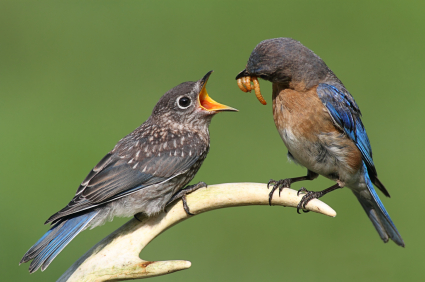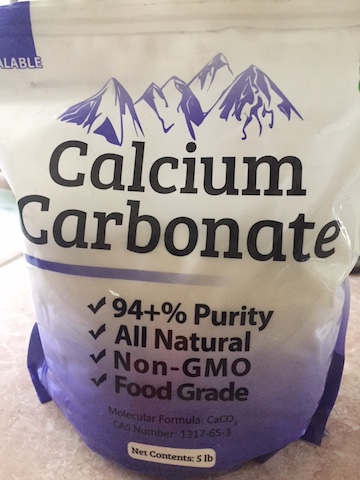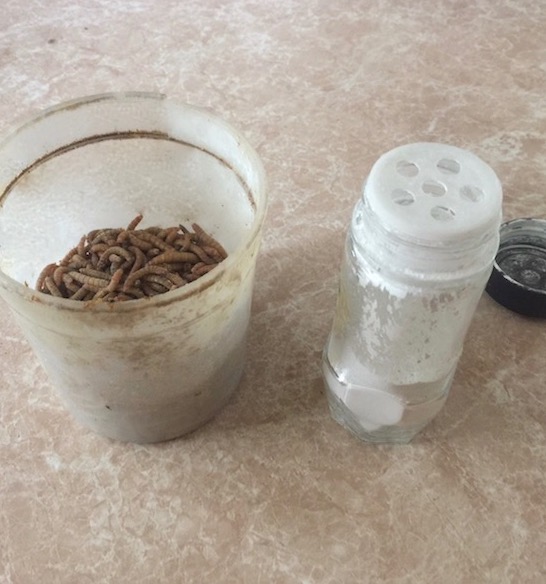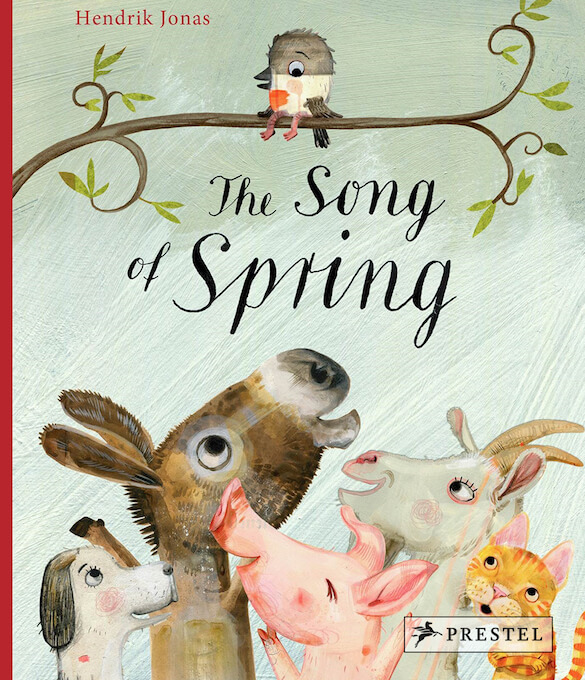-
Whose Eggs Are In Your Birdhouse?
Just when you thought this is it… a family of bluebirds or chickadees- nature might play a most wicked April Fool’s joke! Except it’s not funny and most times fatal to nestlings.
Should you become inquisitive and brave enough to monitor the nest inside your birdhouse (yes, it’s recommended) and spot an egg that’s different in size and/or color- it’s likely the wicked antics of a cowbird.
Talk about shirking responsibilities! Known as parasitic eggs, because Mom will deposit her egg in the nest of another bird, typically with at least 2 eggs already laid. She then flies off leaving full responsibility for upbringing to the unsuspecting parents.
Imagine trying to raise a baby who has grown twice the size of yourself. Just picture that for a moment. Other nestlings in the group barely have a chance at survival as the large cowbird baby hogs most of the food. This actually happens often- to wrens, bluebirds, chickadees, tree swallows and others. Some birds recognize the foreign egg and may abandon the nest or remove the egg. Most birds are unaware an imposter is looming, and end up raising the ridiculously large intruder to the detriment of their own nestlings.
It’s the natural instinct to thrive, though cowbirds won’t be bothered raising their own. Also considered nomadic, they tend to follow livestock herds for the abundant insects, their habitat being open grasslands and meadows which are far away from most nesting spots.
Cowbirds are native (unlike house sparrows or starlings) and are protected under the Migratory Bird Treaty, thus it’s illegal in most cases to remove the egg. Sometimes permits are issued to bluebird monitors and others when circumstances warrant. This is just one good reason for using correctly proportioned birdhouses. Nix the houses with really large entries, they do no favors to the birds you’re trying to attract. Avoid feeding birdseed containing millet as the tiny round seed tends to attract cowbirds. Most birds will flick this filler seed out of your feeder and onto the ground anyway.
A bit smaller than blackbirds, cowbirds have brown heads. To view they gray female or juvenile cowbirds- check sialis.org for more informtion.
And should you like to become a really, really good landlord- monitoring nests actually helps backyard birds thrive. Head over to Sialis.org where you’ll find a wealth of information and any question answered on hosting bluebirds and all native cavity nesting birds (those who use birdhouses).
Photos courtesy of Sialis.org
-
Easiest Way to Add Calcium to Meal Worms
Sure you can save your egg shells, then you can sterilize the egg shells, then you can crush the egg shells and them to bird food, suet or mealworms. Or you can save a ton of time and shake-shake calcium powder right into meal worms just prior to feeding.
Some birds will actually eat the shells straight-up when sprinkled on a deck rail or on the ground below bird feeders. And some adult birds are known to eat their hatchlings’ shells as a means of keeping the nest clean and gaining calcium.
Why add calcium to meal worms?
So you’re trying/or have finally attracted bluebirds to you yard, Maybe you’re lucky enough have them stick around all year? Feeding lots of mealworms is calcium-depleting because they’re so high in protein. Similar to a sugar overdose for kids, too many worms can be too much of a good thing for bluebirds and others. We’re guilty on this charge!Babies need strong bones to form properly, it’s critical for first flight. Lack of calcium (via parents feeding a disproportionate amount worms vs. natural food like insects or berries) can contribute to deformities. In breeding females, lack of calcium may cause her eggs to form with thin or weak shells. This makes passing the soft eggs difficult and exhausting- sometimes even fatal. Called egg bonding, it can also happen in nature to birds who’ve never eaten from mealworm feeders.
What’s the easiest way to add calcium?
A simple “shake-shake” from a spice jar does it! Calcium carbonate is a powder supplement readily available at most health food stores and online. Fairly inexpensive, one pound will likely last for a few years. Save one of your spice bottles and clean thoroughly.Fill the jar with powder and store the bag for future use. Two shakes into the worms and toss gently to lightly coat/dust the worms. That’s all there is to ensuring your bluebirds are getting enough calcium!
-
The Song of Spring- A Fun Children’s Book
A new children’s book worth mentioning… because spring is upon us and birds are calling!
By Hendrik Jonas, The Song of Spring is whimsically illustrated for bringing wonder and smiles to small ones.
Reminiscent of Eric Carle’s famous style, it’s the story of a little bird who forgets his spring song. Along his journey in search of a friend, he meets a goat, cow, pig, cat, dog and more. The little bird imitates all of their sounds as they try to help… to no avail.
It’s not until the female (migratory) bird appears from far away that the little guy remembers how to sing again.
The Song of Spring is a great way to introduce small children to animals and birds. Descriptively written to captivate kid’s attention.
Hendrik Jonas is a Berlin-based illustrator whose work has appeared in The Times and The Guardian. The Song of Spring is his third children’s book. Due March 2019; (ISBN: 978-3-7913-7379-9; Ages 2-5; Hardcover $12.95.
Hummingbird Feeders
about feeders & accessories

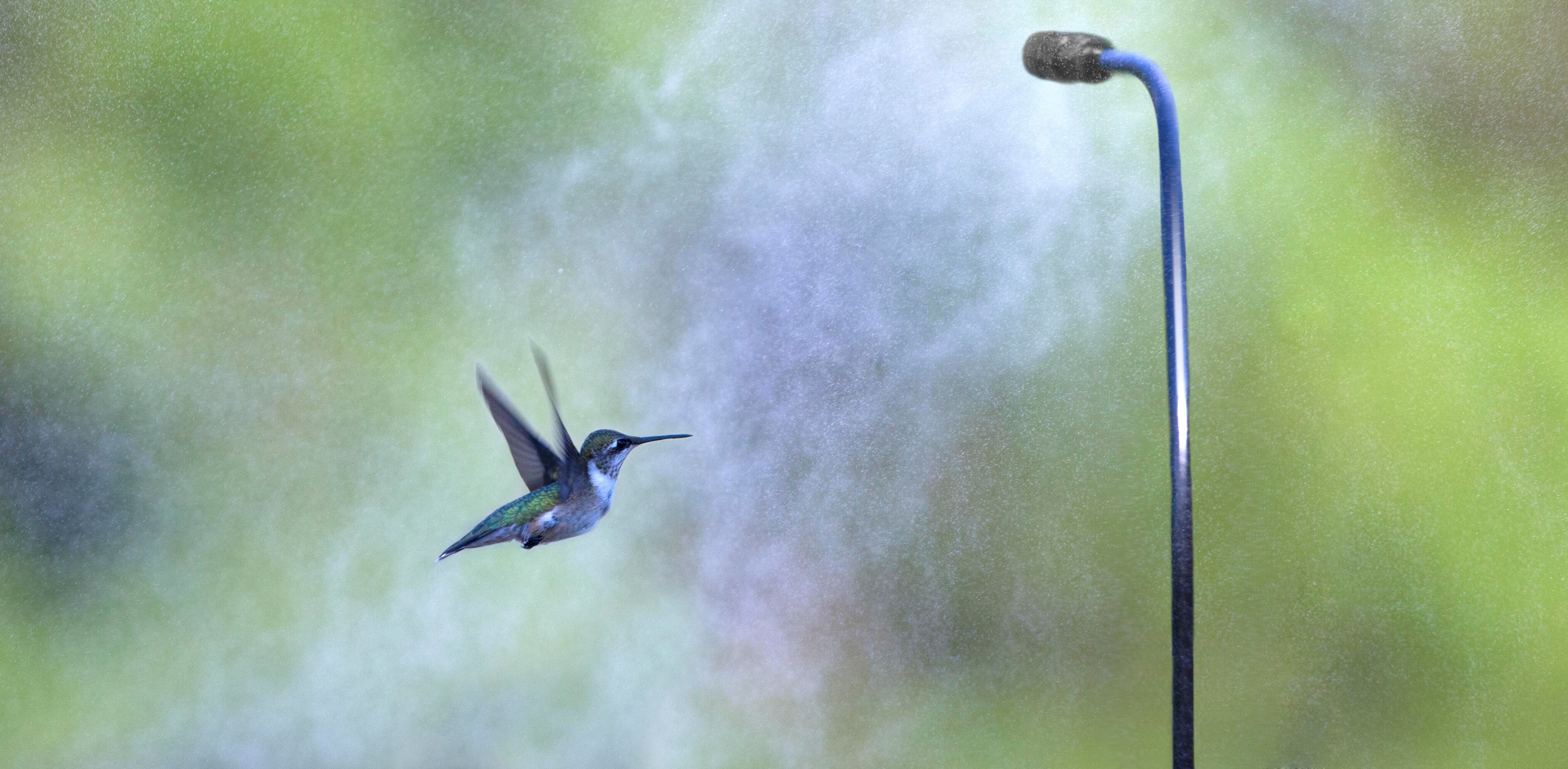
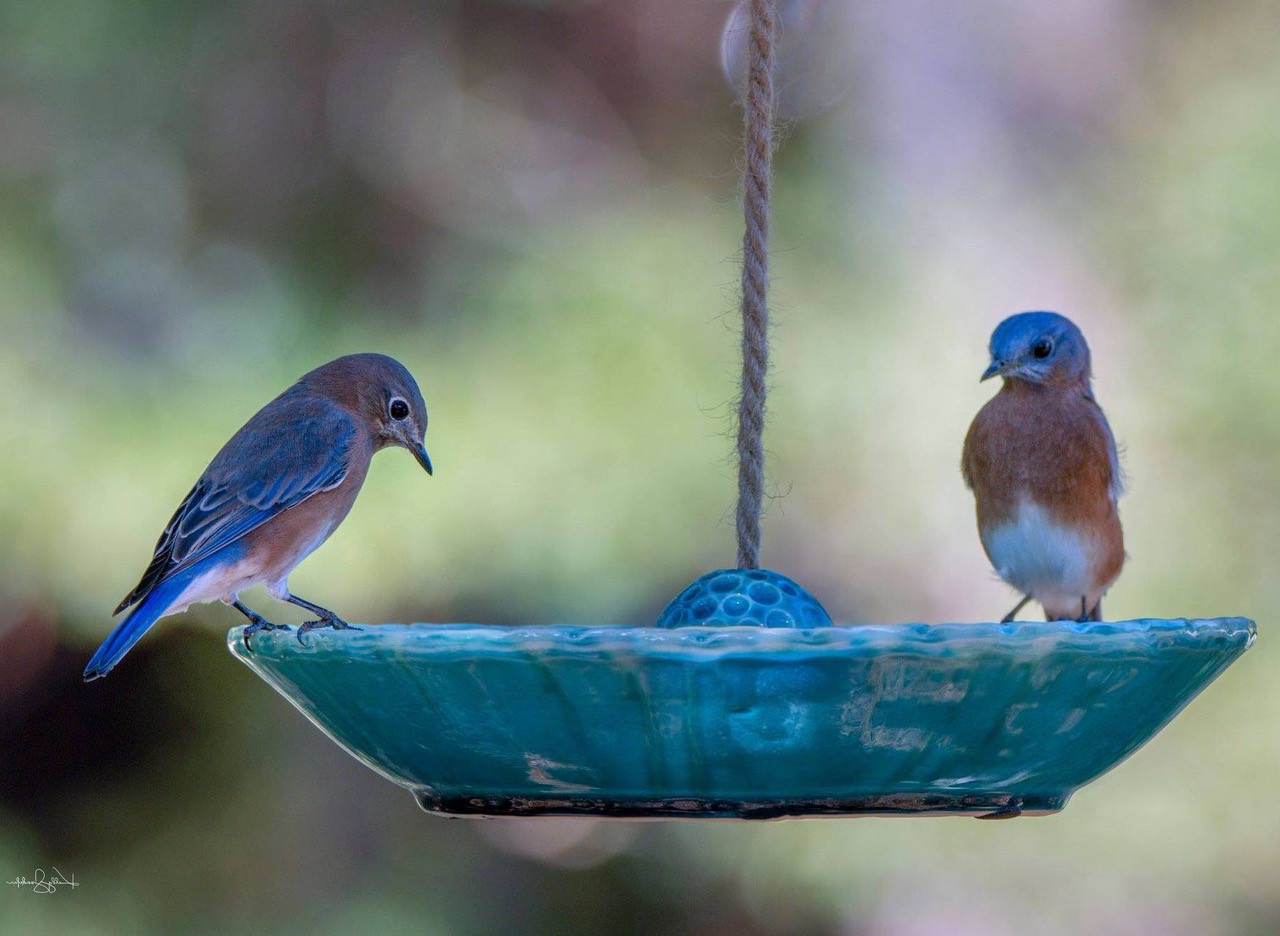
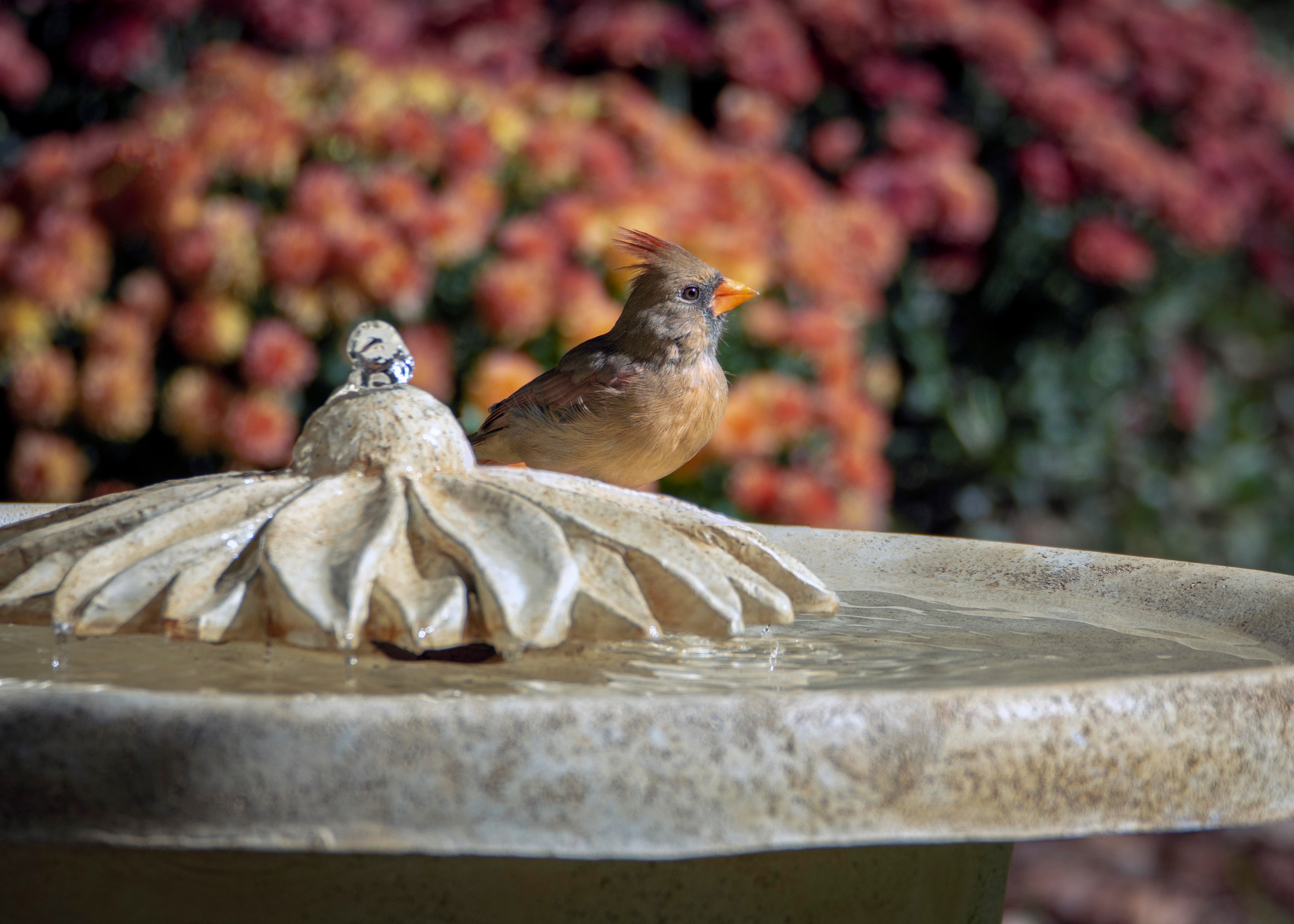
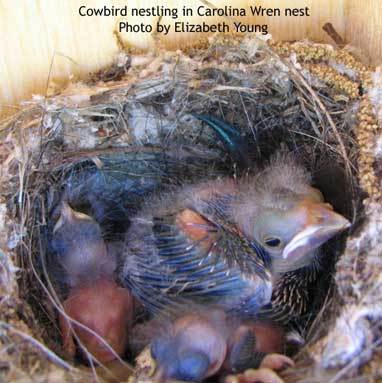
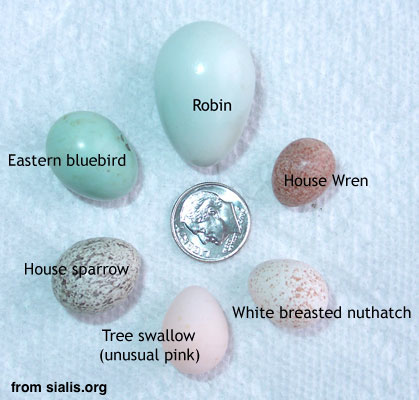
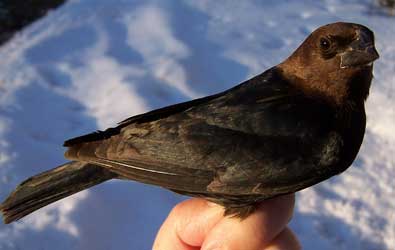 A bit smaller than blackbirds, cowbirds have brown heads. To view they gray female or juvenile cowbirds- check sialis.org for more informtion.
A bit smaller than blackbirds, cowbirds have brown heads. To view they gray female or juvenile cowbirds- check sialis.org for more informtion.